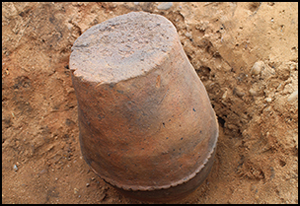Article contents
The inverted dead of Britain's Bronze Age barrows: a perspective from Conceptual Metaphor Theory
Published online by Cambridge University Press: 17 May 2021
Abstract

Barrows are a prominent feature of Britain's Bronze Age landscape. While they originated as burial monuments, they also appear to have acquired other roles in prehistory. British prehistorians, however, have been hampered in their interpretations of these monuments, as they are wary of speculating about how Bronze Age people might have conceptualised their dead. Here, the authors suggest that a recurring pattern of inversion is significant. They use Conceptual Metaphor Theory to argue that Bronze Age people in Britain saw their dead inhabiting an inverted underworld directly beneath the surface of the earth. This interpretation would explain not only burial practices, but also some of the barrows’ other apparent functions, such as guarding boundaries and controlling routeways.
- Type
- Research Article
- Information
- Creative Commons
- This is an Open Access article, distributed under the terms of the Creative Commons Attribution-NonCommercial-ShareAlike licence (http://creativecommons.org/licenses/by-nc-sa/4.0/), which permits non-commercial re-use, distribution, and reproduction in any medium, provided the same Creative Commons licence is included and the original work is properly cited. The written permission of Cambridge University Press must be obtained for commercial re-use.
- Copyright
- Copyright © The Author(s), 2021. Published by Cambridge University Press on behalf of Antiquity Publications Ltd.
References
- 1
- Cited by




